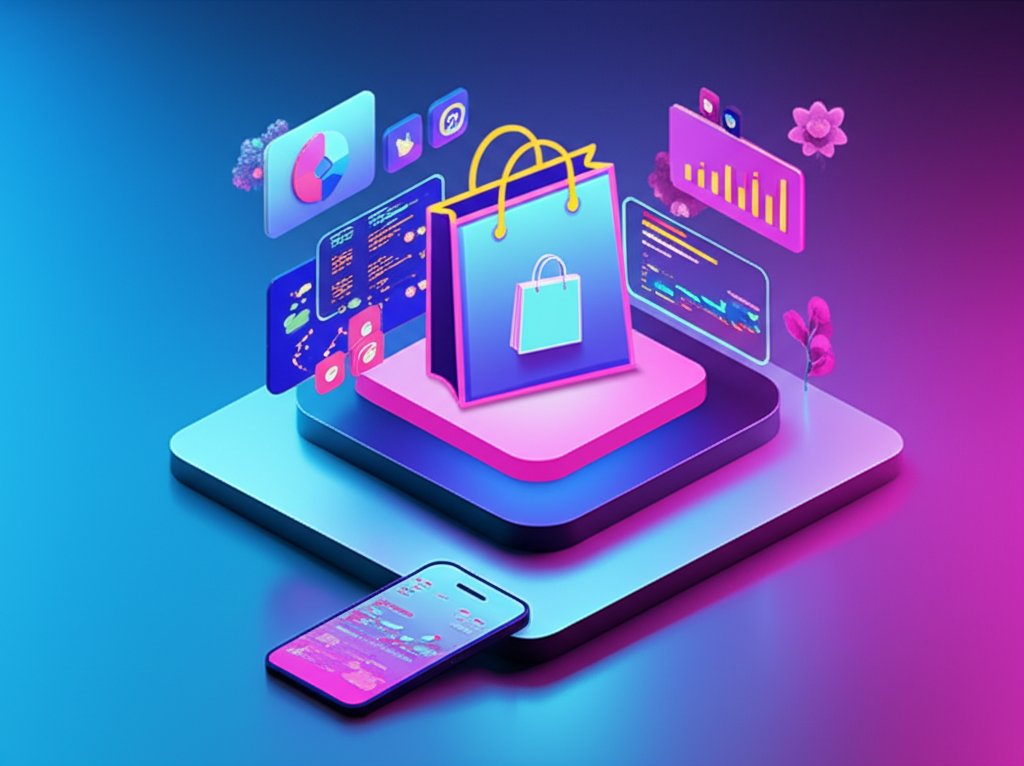For years, your smartphone has operated like a velvet-roped nightclub with two bouncers: Google and Apple. They decide who gets in, what they can do, and how much everyone pays. But the walls of these digital gardens are starting to crumble. A growing number of users and developers are turning to an alternative app store for everything from privacy-focused tools to game emulators that would never pass the official velvet rope.
This isn’t a niche, hacker-only movement anymore. With regulators in Europe forcing Apple to open its ecosystem, the conversation around third-party app marketplaces has gone mainstream. But with greater freedom comes greater risk. How do you navigate this new frontier safely?
This guide cuts through the noise. We’ll break down why you’d even want to leave the official stores, which alternatives are worth your time on both Android and iOS, and most importantly, how to protect yourself from the malware and scams lurking in the shadows.
At a Glance: The Key Takeaways
- What Are They? Alternative app stores are digital distribution platforms for mobile apps that operate independently of the Google Play Store and Apple App Store.
- Why Bother? For users, it means access to a wider variety of apps (including banned or region-locked ones), better deals, and less tracking. For developers, it means lower fees and more freedom.
- The Big Risk: Security. The vetting process on these stores can range from excellent to nonexistent. Malware is a real and present danger.
- Android vs. iOS: The Android ecosystem has a long history of supporting third-party stores. For iOS, this is a brand-new, and currently EU-exclusive, development driven by legal pressure.
- Legality: Using alternative stores is generally legal. However, downloading pirated or copyrighted content from them is not.
Why Step Outside the Walled Gardens?
Before diving into which stores to use, it’s worth asking why. The official app stores offer convenience and a strong (though not perfect) security baseline. So what’s the incentive to look elsewhere? The reasons boil down to choice, cost, and control.
For Users: The Allure of More
The most compelling reason for users is simple: access. The official stores are curated experiences, which means they are also censored.
- Find Banned Apps: Some of the most popular alternative apps are things Apple and Google would never allow. Think powerful game emulators for playing retro classics, YouTube clients that block all ads, or “tweaked” versions of social media apps with extra features.
- Bypass Geographic Restrictions: A new app or game launched in another country but not yours? An alternative store is often the fastest way to get your hands on the installation file.
- Discover Unique and Niche Apps: With lower barriers to entry, independent developers often launch their Minimum Viable Products (MVPs) on these platforms to test the waters before attempting to navigate the complex approval processes of the Big Two.
- Reclaim Your Privacy: Some stores are built entirely around privacy. F-Droid, for example, exclusively hosts free and open-source software (FOSS) that is free of ads and invasive trackers. Others, like the Aurora Store, let you download from Google Play without ever signing in with your Google account.
For Developers: Escaping the “App Store Tax”
For the people building the apps, the official stores can feel less like a garden and more like a fortress with a very expensive toll bridge.
- Lower Fees: Apple charges developers $99 per year just to be in its program, and Google takes a one-time $25 registration fee. More significantly, both companies have historically taken a 15-30% commission on all digital sales—a fee often called the “App Store tax.” Stores like the Epic Games Store are challenging this with developer commissions as low as 12%.
- Greater Visibility: Getting noticed among millions of apps on the Play Store is a monumental task. A smaller, curated store offers a better chance for a new app to stand out and find its audience.
- Creative Freedom: Developers can publish apps that might not fit the strict content or design guidelines set by Apple and Google, allowing for more experimentation.
The Wild West of Android: A World of Choice

Android’s open nature has always made it a haven for third-party app stores. If you’re on a Samsung, Pixel, or any other Android device, you have a staggering number of options. Enabling the installation from “unknown sources” in your settings is your key to this world.
The Major Independent Players
These are the big, platform-agnostic stores that have been serving millions of users for years.
- Aptoide: Imagine an app store that’s actually a network of stores. On Aptoide, any user can manage and distribute their own collection of apps. It’s a massive, decentralized marketplace with over 430 million users. While its size is a strength, it also means you need to be careful about which repository you’re downloading from.
- Amazon Appstore: The most “corporate” and polished alternative, the Amazon Appstore is the default marketplace for Amazon’s Fire devices but is available for any Android phone. Its key feature for years has been a “Free App of the Day” promotion, offering a paid app for free.
- Uptodown: Founded in Spain in 2002, Uptodown is one of the largest and most trusted repositories. It hosts millions of APK files and is available in 15 languages. A major advantage is its partnership with VirusTotal; every file is scanned by over 70 antivirus engines, providing a strong layer of security. It also lets you download older versions of apps, which is perfect for rolling back a bad update.
The Niche Specialists
Some stores aren’t trying to replace the Play Store entirely. Instead, they serve a specific purpose or philosophy.
- F-Droid: This is the gold standard for privacy advocates. F-Droid exclusively contains Free and Open-Source Software (FOSS). Every app is vetted to ensure it has no hidden costs, ads, or user tracking. The selection is smaller and you won’t find mainstream social media apps here, but for privacy-centric utilities, it’s unmatched.
- APKMirror & APKPure: These aren’t app stores in the traditional sense, but they are essential resources. They are reliable, well-respected repositories of APK files (the installation packages for Android apps). If you need to find a specific, older version of an app or download one that’s not available in your country, these sites are your best bet. They don’t have a flashy “install” button; you download the file and install it manually. It’s a great way to [placeholder_link slug=”application-like-play-store” text=”Explore app store alternatives”] without committing to a full-blown marketplace.
Your Phone’s Other App Store
You might not even need to download anything. Most major Android manufacturers pre-install their own app stores alongside Google Play.
- Samsung Galaxy Store: If you have a Samsung phone, you already have it. It’s a polished experience that often features exclusive deals, themes, and apps optimized for Samsung devices.
- Huawei AppGallery: Following its split with Google, Huawei invested heavily in its AppGallery, turning it into the world’s third-largest app store. With over 600 million users, it’s a robust platform that is now available on all Android devices, not just Huawei’s.
- GetApps (Xiaomi), OPPO App Market, VIVO App Store: These manufacturer-specific stores cater to their respective devices, often featuring apps and promotions tailored to their local markets in Asia and Europe.
Cracks in the Ivory Tower: iOS Gets Alternatives
For nearly two decades, the Apple App Store was the only game in town for iPhone users. Sideloading apps was a dark art reserved for those willing to “jailbreak” their phones—a risky process that could void warranties and expose the device to security threats.
That’s all changing. Thanks to the European Union’s Digital Markets Act (DMA), Apple has been forced to allow alternative app marketplaces on the iPhone for users in the 27 EU countries.
The New Guard: Official, EU-Approved Marketplaces
As of early 2024, this is a brand-new space, but two key players have emerged.
- AltStore PAL: Created by developer Riley Testut, AltStore has long been a favorite workaround for sideloading. AltStore PAL is its new, official incarnation for the EU. It launched with just two apps—a game emulator and a clipboard manager—but its existence is a landmark moment.
- Setapp Mobile: From developer MacPaw, Setapp is a popular “Netflix for apps” subscription service on Mac. They are bringing a curated, subscription-based app marketplace to the iPhone in the EU, offering a collection of premium apps for a single monthly fee.
The Workarounds: Sideloading for the Rest of Us
If you’re outside the EU, the official gates remain closed. However, clever workarounds that use Apple’s own developer tools allow for a limited form of sideloading.
- AltStore (The Original): This ingenious solution uses your Apple ID to grant you a “developer” license, allowing you to install up to three apps from outside the App Store. The catch? It requires a companion app on your Mac or PC, and you must “refresh” the apps every seven days by connecting to your computer over Wi-Fi.
- SideStore: A fork of AltStore, SideStore’s clever trick is that it can refresh apps directly on your device without needing to connect to a computer after the initial setup. It makes the process significantly more convenient.
- BuildStore: This is a paid, subscription-based service that handles all the technical complexity for you. For a monthly fee, you get access to a library of over 800 apps, including emulators, tweaked social media apps, and more. Because it’s a paid service that manages the app certificates, apps from BuildStore are rarely revoked and just work.
- Scarlet: A popular free alternative that’s known for its library of tweaked apps (like Instagram++ or Tinder++). It’s simpler to install than AltStore but may be less stable, as Apple frequently revokes the free certificates it uses.
A Note on Jailbreaking: The original alternative, Cydia, is a package manager for jailbroken iPhones. While it offers the ultimate freedom to modify iOS, jailbreaking is less common today. It’s a complex process that can compromise your device’s security and is generally only recommended for advanced users and security researchers.
Staying Safe in Unofficial Waters: Your Security Checklist

With great power comes great responsibility. The single biggest reason to be cautious with alternative app stores is security. When you step outside the curated walls of Apple and Google, you become your own head of security.
Rule #1: Understand the Risks
- Malware: This is the top threat. Hackers can inject malicious code into popular apps and upload them to stores with weak security checks. This code can steal your banking information, personal data, or hold your device for ransom.
- Piracy: Many stores host paid apps for free. Not only is this illegal, but these pirated apps are prime vectors for malware. If you’re not paying for the product, you are the product.
- Lack of Updates: Apps installed from third-party sources may not get timely security patches, leaving you vulnerable to known exploits.
- Instability: Modded or tweaked apps can be buggy and unstable, leading to crashes and poor performance.
How to Vet an Alternative Store
Not all third-party stores are shady back alleys. Many are run by reputable companies or communities. Here’s how to tell the difference.
- Check the Reputation: What are tech communities saying? Search for the store’s name on forums like Reddit (e.g., r/androidapps, r/sideloaded) or XDA Developers. A long track record of positive user experiences is a good sign.
- Look for a Vetting Process: Does the store publicly state its security policy? Reputable stores like Uptodown scan every file with multiple antivirus engines. F-Droid’s team reviews the source code of every app it hosts. If a store has no “About Us” page or security information, steer clear.
- Analyze the Business Model: How does the store make money? If it’s a paid subscription (BuildStore), through developer fees, or supported by a large company (Amazon, Samsung), the model is clear. If it’s a free-for-all with tons of ads, be much more skeptical.
Sideloading Best Practices
- Stick to One or Two Reputable Sources: Don’t just download an APK from the first Google result you find. Choose a trusted store or repository and get your apps from there.
- Scrutinize App Permissions: When you install an app on Android, it will ask for permissions. Read them! Does that simple calculator app really need access to your contacts and microphone? If a request seems suspicious, deny it.
- Use a Mobile Antivirus: Consider running a security app from a reputable brand like Malwarebytes, Bitdefender, or Sophos to scan new installations.
- Don’t Use Your Primary Google/Apple ID: For stores that require an account, consider using a secondary email or account that isn’t tied to your primary digital life. This is especially important for sideloading tools on iOS that require an Apple ID.
It’s an exciting time to [placeholder_link slug=”alternative-app-markets” text=”Explore alternative app markets”], but caution is your best tool.
Frequently Asked Questions
Is using an alternative app store legal?
Yes, using the store and downloading apps is generally legal. However, the legality of the content depends on what you download. Downloading a free, open-source app from F-Droid is perfectly legal. Downloading a cracked, pirated version of a paid game is copyright infringement.
Will this void my phone’s warranty?
On Android, simply enabling “unknown sources” and installing an APK will not void your warranty. On iOS, sideloading using methods like AltStore also does not void your warranty. The one exception is jailbreaking (for iOS) or rooting (for Android), which involve modifying the operating system at a deep level and will almost certainly void your warranty.
Can I get updates for apps installed from a third-party store?
It depends on the store. Some, like the Amazon Appstore or F-Droid, have their own update mechanisms. For apps downloaded as standalone APKs, you will likely need to manually download and install the new version yourself to update it.
Why aren’t these apps on the official stores anyway?
There are many reasons. The app might violate a specific policy (e.g., apps that block ads in other apps), contain content deemed inappropriate (like some game emulators), or the developer may have chosen to distribute it independently to avoid high commission fees.
The Future is Fragmented (And That’s a Good Thing)
The duopoly held by Google and Apple is facing its most significant challenge yet. Regulatory pressure, developer frustration, and user demand for more choice are creating a more fragmented, diverse, and ultimately more interesting mobile ecosystem.
This shift places more power into your hands. You are no longer just a consumer in a pre-approved mall; you are an explorer with a map to countless independent shops and bazaars. This new role requires a bit more savvy and a healthy dose of skepticism, but the rewards are substantial.
Your next step isn’t to abandon the Play Store or App Store entirely. They remain the simplest and, for most people, the safest option. Instead, the goal is to see them as what they are: one option among many. By understanding the landscape, vetting your sources, and prioritizing your security, you can take control of your device and tailor it to be exactly what you want it to be. The gates are open—it’s time to see what’s outside.
- Alternative App Stores Arrive as Apple Loosens Grip - November 16, 2025
- Your Android App Download Guide for Manual APK Installation - November 15, 2025
- Realistic Mobile Games Deliver Stunning, Lifelike Visuals On The Go - November 14, 2025










